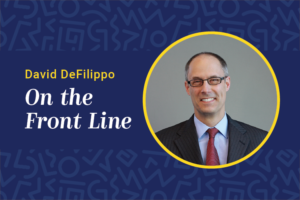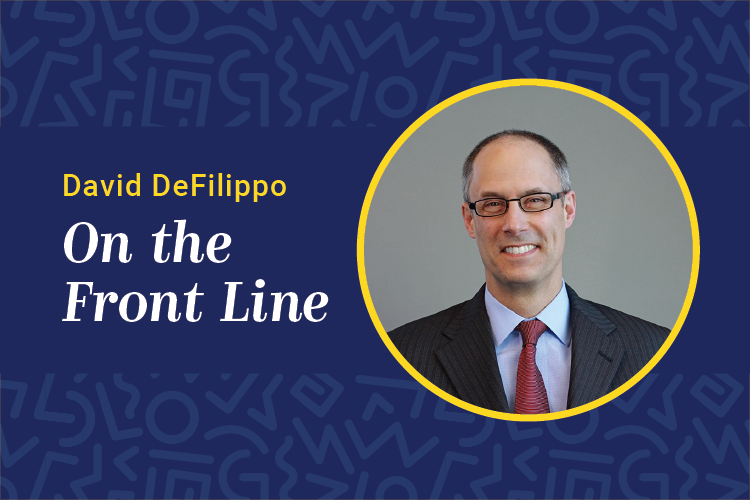 I was recently reminded about the early formation of leadership behaviors while attending a webinar focused on “Leadership on the Sea” that was facilitated by a friend who I have known since we were both teenagers. Ian Patrick is a teacher, coach and dormitory parent at Tabor Academy, which is a co-educational, secondary school in Marion, Massachusetts, and the school that we both attended from 1980–1984. In previous columns I have mentioned my experience as a teacher and coach during my first four years after graduating from college, which was largely influenced by my formative experiences as a student at Tabor. After serving as a faculty member, I transitioned to the business world and was fortuitously able to combine my passion for teaching and coaching students into a career focused on human capital development.
I was recently reminded about the early formation of leadership behaviors while attending a webinar focused on “Leadership on the Sea” that was facilitated by a friend who I have known since we were both teenagers. Ian Patrick is a teacher, coach and dormitory parent at Tabor Academy, which is a co-educational, secondary school in Marion, Massachusetts, and the school that we both attended from 1980–1984. In previous columns I have mentioned my experience as a teacher and coach during my first four years after graduating from college, which was largely influenced by my formative experiences as a student at Tabor. After serving as a faculty member, I transitioned to the business world and was fortuitously able to combine my passion for teaching and coaching students into a career focused on human capital development.

Within the leadership development field, the seminal book “The Leadership Pipeline,” co-written by Stephen Drotter, Ram Charan and Jim Noel in 2000, forms the contemporary model for leadership progression and the associated developmental “turns” that one must take to advance through the six leadership levels. The pipeline nomenclature is well-established in boardrooms and among leadership teams as they discuss talent management, succession plans and the associated growth that individuals require as they progress to the next level. As I listened to Ian’s session focused on the leadership archetypes and lessons that he uses to teach and develop students, it made me wonder where the leadership pipeline truly begins.
While Ian addressed fellow alumni during this webinar and discussed topics including emotional intelligence, self-awareness and authenticity, I felt immediately at home and as if I was part of a corporate leadership development session. It occurred to me that these topics are typically discussed in a corporate setting versus in a high school setting. I don’t know about you, but no one talked to me about these models at that age, so I was really struck by the ways that Ian discussed this work with students and its correlation to the positive and negative leadership traits that we focus on as practitioners.

Ian has dedicated his career to developing students and has spent a majority of the past 30 years at our alma mater. He is an example of the dedication and commitment that is affectionately referred to as the “triple threat” — the three-pronged work of those who teach and coach by day and then cohabitate in dormitories with those same students. In each of these venues there are ample opportunities to teach both the technical lessons of a subject, like algebra or the best lacrosse stick handling technique on playing fields, as well as the discipline that comes from living away from home and managing one’s schedule. Equally important are the lessons that come from working toward common goals as a team and the interpersonal skills that are learned by living together in a dormitory. For example, in my case as an only child, I learned an innumerable amount being away from home and by being adopted by twenty “brothers” overnight.
To bring these lessons to life, Ian shared an assignment that he provides to the seniors in his “Leadership and Literature” course. The assignment reads, “Compose a seventy-five word (maximum) Personal Leadership Philosophy that is emblematic of what you have learned in this course, how leadership applies to you as both an individual and part of a larger whole and which traits you feel are most crucial for a leader to possess. This is YOUR leadership mantra, so please think clearly and choose your words carefully.”

Ian explained to me one-on-one, “I assign this task at the conclusion of the course to empower students to come to conclusions about what they genuinely value in leadership. This is THEIR leadership philosophy, and they must take ownership of it. Most important, however, is that they continuously make small adjustments to their Personal Leadership Philosophy as they develop as people. Much like the continuous evolution of leadership itself, we all evolve as individuals, and being aware of our strengths, weaknesses, and values is imperative and requires regular self-reflection.”
I smiled when Ian reviewed this assignment as it reminded me of an executive coaching exercise that I regularly conduct with leaders to push them to develop their own authentic definition of what they want to be known for as a leader. I have found that this simple exercise can be a combination of difficult, reflective and emotional for individuals as they search for the words to describe the leader who they aspire to become. Ian is accomplishing the same outcome except he is doing so far earlier in the foundational development process, which is preparing these students not only for college and careers, but more importantly for life.
For this reason, I’d submit that my friend Ian is doing the harder and more important work of shaping and developing these future leaders well before they get to us in the workforce. For that I am grateful to have had the opportunity to attend Tabor Academy all those years ago with Ian, and I applaud him and his fellow faculty for the impact they are having on the next generation.














